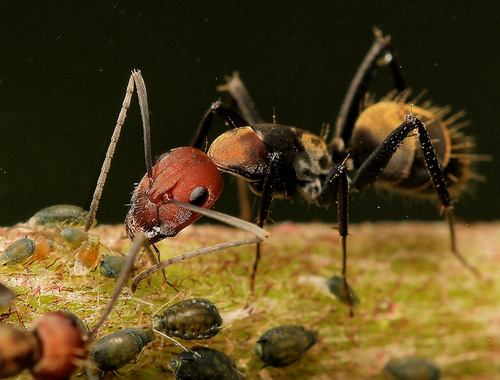
Camponotus
Overview
Camponotus is one of the largest genera of ants, commonly known as carpenter ants due to the nesting habits of many species, which excavate wood to create galleries. With over 1,000 species described globally, they exhibit a wide variety of sizes, colors, and behaviors.
Identification
Carpenter ants are generally medium to large in size and often polymorphic, with minor and major workers. Their bodies are robust, with a smoothly rounded thorax when viewed from the side, and they typically possess strong mandibles. Colors range from black and red to a combination of both, depending on the species.
Habitat and Distribution
Camponotus ants are found worldwide, particularly in forests and wooded areas. They are highly adaptable and can also be found in grasslands, deserts, and urban environments. Many species prefer moist, decaying wood for nesting, though some nest in soil or inside structures.
Behavior and Colony Structure
Camponotus colonies can contain thousands of individuals and are typically headed by a single queen. They are primarily nocturnal foragers, collecting both solid and liquid food. The division of labor among workers supports their survival in a range of habitats, and some species show trail-following behavior during foraging.
Diet and Ecological Role
These ants are omnivorous, feeding on honeydew from aphids, plant exudates, and other insects. They play important roles in nutrient cycling, soil aeration, and the control of other insect populations. By tunneling through wood, they also contribute to decomposition, although this can become problematic when nesting in man-made structures.
Pollination Interaction
Camponotus ants may visit flowers for nectar and thus participate in incidental pollination. However, due to their smooth bodies and tendency to consume nectar without contacting reproductive flower parts, their role as pollinators is generally limited. Some species do engage in mutualistic relationships with plants and other insects.
Human Interaction
While many Camponotus species are ecologically beneficial, some are considered pests due to their wood-burrowing habits in homes and buildings. Unlike termites, they do not eat wood but hollow it out to create nests, which can cause structural damage if infestations are left unchecked.
